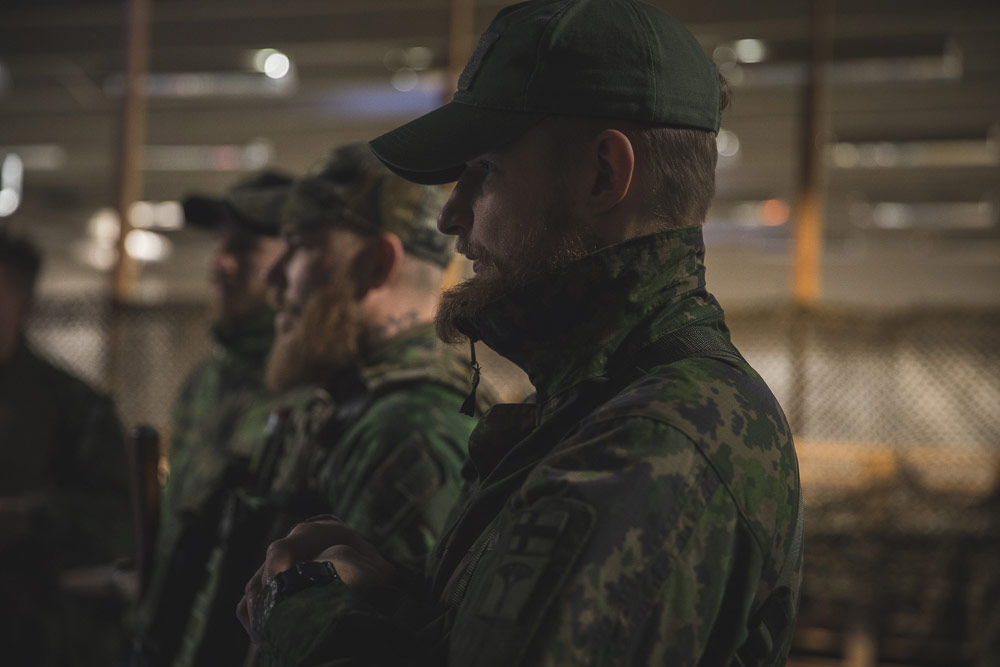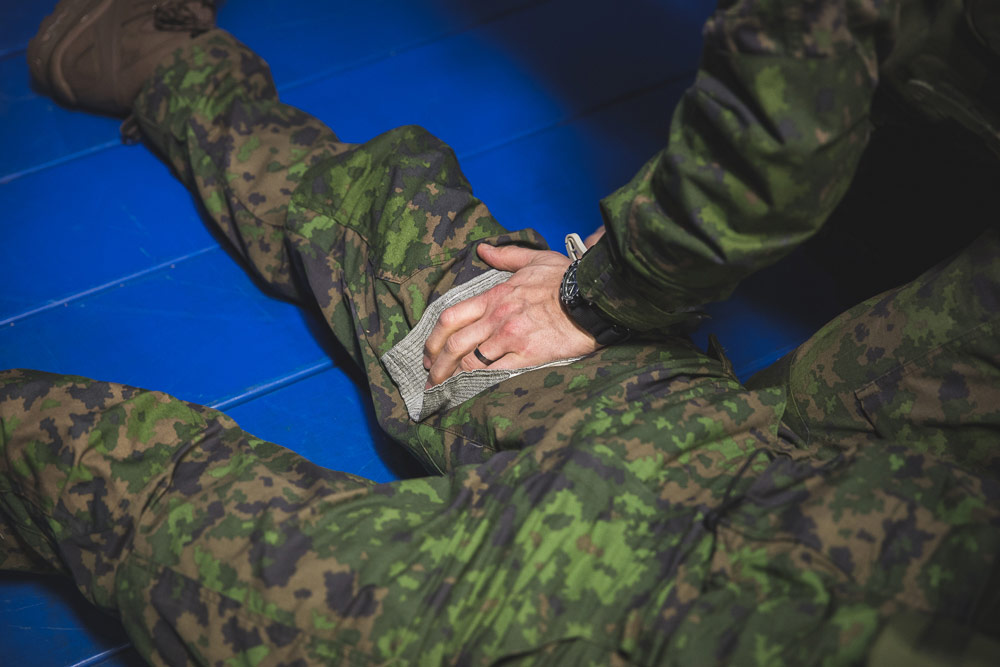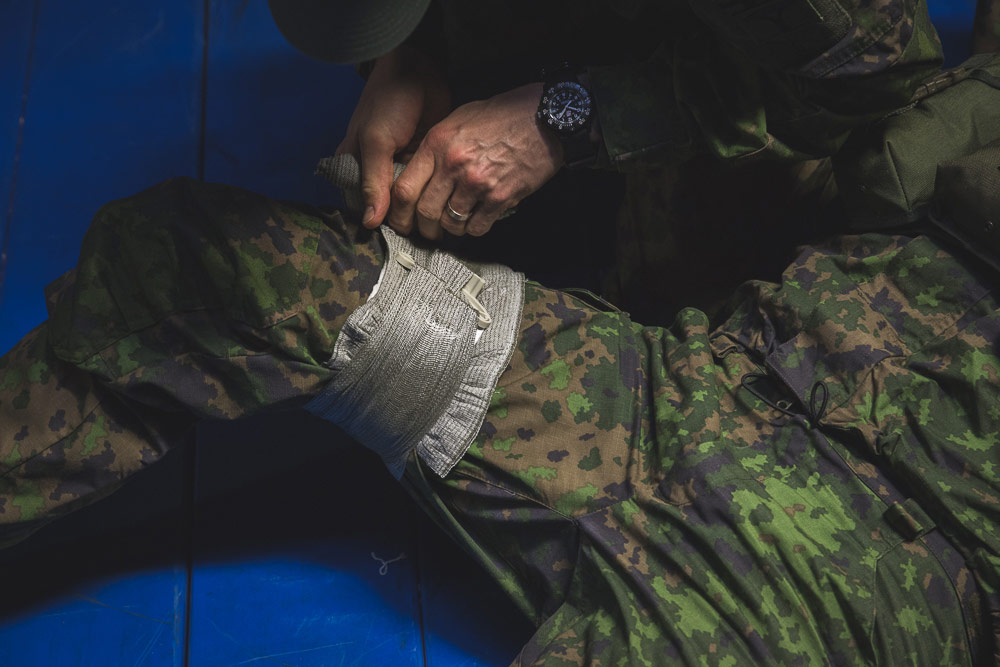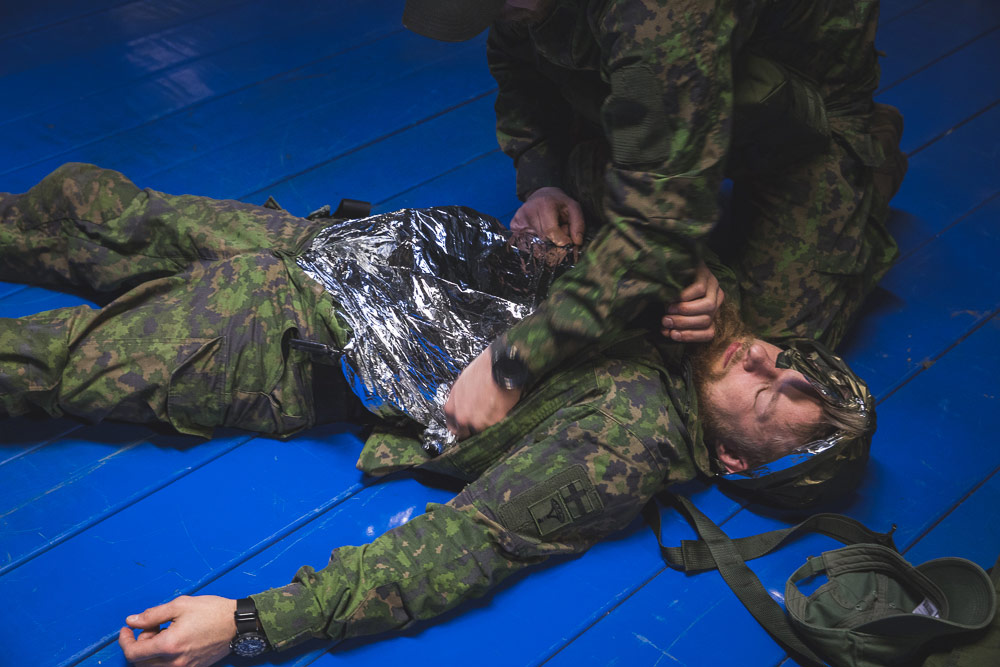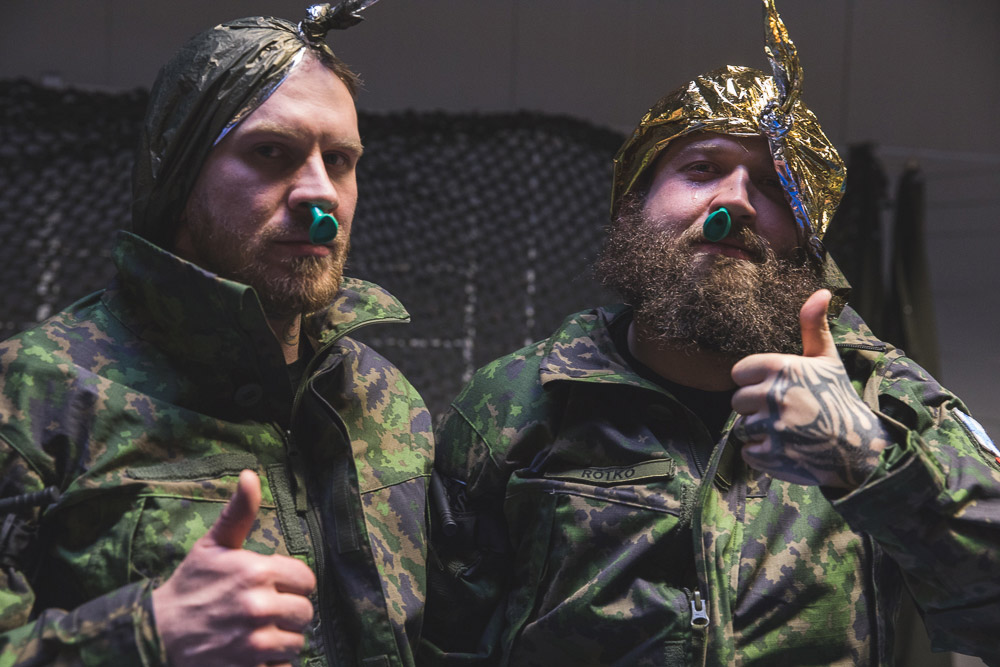
EKS/SCMM 2018, Part 3, TCCC
EKS/SCMM 2018, Part 3, TCCC
Preparation for SCMM continues. Our goal is to refresh our basic soldier skills, and this time we were focusing on Tactical Combat Casualty Care basics. We managed to get ourselves a really good instructor. This individual has trained TCCC for the Finnish Border Guard’s Special Forces and he has a degree in trauma care, as well as plenty of experience.
We had a compact half-day workshop ahead of us, covering the basic principles of TCCC with an emphasis on procedures and what an individual soldier can do to save himself or a comrade in a combat situation. First we walked through the theory about prioritization of tasks, physiology of death, and basic procedures for securing the airways, stopping the bleeding, and keeping a casualty warm. After that we walked through the equipment, such as tourniquets, pressure bandages, thermal blankets, and nasopharyngeal airway usage.
Practical exercises progressed gradually, covering the phases and equipment used, with drills progressing towards complete scenarios in order to execute the skills learned. In this training session we focused solely on medical topics, and we left the tactical and combat elements for another time. It was a smart move, as we were able to get in a good amount of repetitions in short period of time. Since we were a small group the instructor was able to give individual guidance to all of the students and provide feedback on the spot. This made the training highly effective.
While the upcoming military competition is the reason we undertook the TCCC training, it’s definitely worth investing in these skills. You never know what might happen, and in a tight situation knowing even one of these skills could be invaluable in helping others or even yourself. So keep you TCCC skills up to date!
Boogeyman
After a sleepless night I arrived at our warehouse where we had our TCCC class. I was a bit nervous, and my anxiety was not relieved when Macho Man lined up the TCCC equipment - a Soviet era tourniquet, skalpel, and an enema, among others...
The actual training was really useful and practical. It’s not too often that you can start your work day by inspecting your colleagues’ nut sacks and inserting a lubed tube into someone's nose. But all in all an interesting topic, and the content really got me thinking about these topics. I ended up buying my own CAT tourniquet for my EDC kit, just in case.
Macho Man
It was good to refresh my TCCC skills. It had been quite a while - at that time gamma-sterilized bandages were tier one equipment, and were stored in the M62 trousers’ right cargo pocket.
Walking through the tourniquet usage was probably the best part of the training. Fast, effective, and extremely painful when executed properly by your team mate. During training it became evident that establishing standard operating procedures within the team is a must in order to ensure that gear is found quickly.
Examining the casualty was a positive surprise - it’s not often that you have the chance to properly touch another hairy guy without ending up in a fight.
Keeping the casualty warm was the most difficult task to perform. While the thermal blanket is cozy it isn’t exactly comfortable when someone pulls it under your clothing.
The nasopharyngeal airway tube usage was easier than what I expected; however, a kind of rubbery taste from the lubricant stayed in my mouth for the rest of the day.
A great exercise indeed. I think one should practice TCCC skills a lot and train for realistic situations. I’m not talking about shy touching in gucci gear, no, but real repetitions that will help you execute these procedures if someone’s life is at stake.
